- Home
- 02・テオティワカン文明
- 【壁画 Wall Painting】メキシコ‐テオティワカン文明
【壁画 Wall Painting】メキシコ‐テオティワカン文明
- 2023/11/13
- 02・テオティワカン文明
- コメントを書く

この「壁画」は、メキシコのテオティワカン文明に由来し、紀元500年から550年頃に制作されました。壁画は地元の鉱物顔料を使用した土の骨材と石灰の漆喰で作成されています。
テオティワカンは古代メキシコで最も重要な都市の一つで、その文化は多くの芸術的成就をもたらしました。この壁画は、テオティワカンの芸術の一例であり、その時代の芸術的スタイルと技法を示しています。壁画は、明るいミネラル顔料で描かれており、色彩豊かで複雑なデザインを特徴としています。
この壁画は、テオティワカンの文化や信仰に関連する情報を提供する可能性があり、当時の人々の生活や精神世界に光を当てています。それは、その時代の芸術と思想の洞察を提供する重要な歴史的なアーティファクトです。
この作品は、古代メキシコの都市テオティワカンにあるアパートメントコンプレックスの壁画の一部です。紀元1千年紀初頭に、テオティワカンの住民は大規模なアパートメントコンプレックスに住み、その多くは壁画で豊かに飾られていました。この作品は、おそらく東側のコンプレックスであるテキナンティトラとして知られる場所の内部の部屋の飾りの一部で、少なくとも8つの類似のイメージのうちの1つでしょう。
この断片は、おそらく神であるか、または解読されていない複雑な象形文字(単語を表す記号)の可能性もある、非常に抽象的な描写を示しています。図形の対称性と、歯車のような口と爪のような手の位置から、抽象的な人間のような存在を示唆しています。口からは花のイメージが描かれた巻物が出ており、おそらく「花言葉」や慈悲深い演説の視覚的表現かもしれません。この図は、緑で塗られた円形と卵形の形状で覆われており、おそらく翡翠のビーズのイメージで、緑の羽で縁取られています。緑の石と緑の羽は、贅沢な輸入材料でした。緑の色は水、トウモロコシの植物、農業の豊かさを思わせます。
この壁画の類似の断片は、サンズベリー・センター・フォー・ザ・ビジュアル・アーツのコレクションにもあり、ベルリンの民族学博物館にある同じ壁画シリーズの断片には、緑の玉と羽のモチーフを繰り返す境界線が含まれています。しかし、壁画の中心のキャラクターのすべてが花と緑ではないのです。画像の中央にある恐ろしい爪は、自然の力、神聖な力、またはテオティワカン自体の軍事政権による潜在的な暴力の脅威を示唆しています。
さらなる参考文献
Berrin, Kathleen, and Esther Pasztory. Teotihuacan: Art from the City of the Gods. The Fine Arts Museums of San Francisco, 1993.
Carballo, David M., Kenneth G. Hirth, and Barbara Arroyo. Teotihuacan: The World Beyond the City. Dumbarton Oaks, 2020.
Cowgill, George L. State and Society at Teotihuacan. Annual Review of Anthropology, Vol. 26, pp. 129-161, 1997.
Evans, Susan Toby, “Teotihuacan Murals: An Appendix,” in Processions in the Ancient Americas, Penn State University Occasional Papers in Anthropology No. 33 (2016): 122–153
Galitz, Kathryn. The Metropolitan Museum of Art: Masterpiece Paintings. New York: Skira, 2016, no. 44.
Headrick, Annabeth. The Teotihuacan Trinity: The Sociopolitical Structure of an Ancient Mesoamerican City. University of Texas Press, 2007.
Manzanilla, Linda R. Cooperation and tensions in multiethnic corporate societies using Teotihuacan, Central Mexico, as a case study. Proceedings of the National Academy of Sciences of the United States of America Vol. 112, No. 30, pp. 9210-9215, 2015.
Murakami, Tatsuya. Entangled Political Strategies: Rulership, Bureaucracy, and Intermediate Elites at Teotihuacan. In Sarah Kurnick and Joanne Baron, eds., Political Strategies in Pre-Columbian Mesoamerica, pp. 153-179. University Press of Colorado, 2016.
Pasztory, Esther. Teotihuacan: An Experiment in Living. University of Oklahoma Press, 1997.
“Recent Acquisitions: A Selection 2014.” In Metropolitan Museum of Art Bulletin. Vol. vol. 72, no.2. Fall 2014, p. 15.
Robb, Matthew, ed. Teotihuacan: City of Water, City of Fire. San Francisco: de Young Museum, Fine Arts Museums of San Francisco, 2017, no. 180, p. 410.
Ruiz Gallut, María Elena, and Jesús Torres Peralta, eds. Arquitectura y urbanismo: pasado y presente de los espacios en Teotihuacan: Memoria de la Tercera Mesa Redonda de Teotihuacan. Mexico City, Instituto Nacional de Antropología e Historia, 2005.
Sarro, Patricia J., and Matthew H. Robb. Passing through the Center: The Architectural and Social Contexts of Teotihuacan Painting. In Cynthia Kristan-Graham and Laura M. Amrhein, eds., Memory Traces: Analyzing Sacred Space at Five Mesoamerican Sites, pp. 21-43. University Press of Colorado, 2015.
Sugiyama, Saburo. Human Sacrifice, Militarism, and Rulership: Materialization of State Ideology at the Feathered Serpent Pyramid, Teotihuacan. Cambridge University Press, 2005.
Taube, Karl A. The Temple of Quetzalcoatl and the Cult of Sacred War at Teotihuacan. RES: Anthropology and Aesthetics, No. 21, pp. 53-87, Spring, 1992.
Turner, Andrew. Unmasking Tlaloc: The Iconography, Symbolism, and Ideological Development of the Teotihuacan Rain God. In Anthropomorphic Imagery in the Mesoamerican Highlands: Gods, Ancestors and Human Beings, Brigitte Faugere and Christopher S. Beekman, eds. University Press of Colorado, 2020.
画像出所:メトロポリタン美術館
コメント
トラックバックは利用できません。
コメント (0)

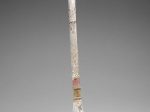
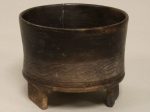
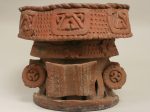
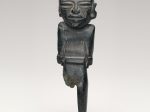
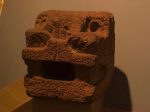
この記事へのコメントはありません。